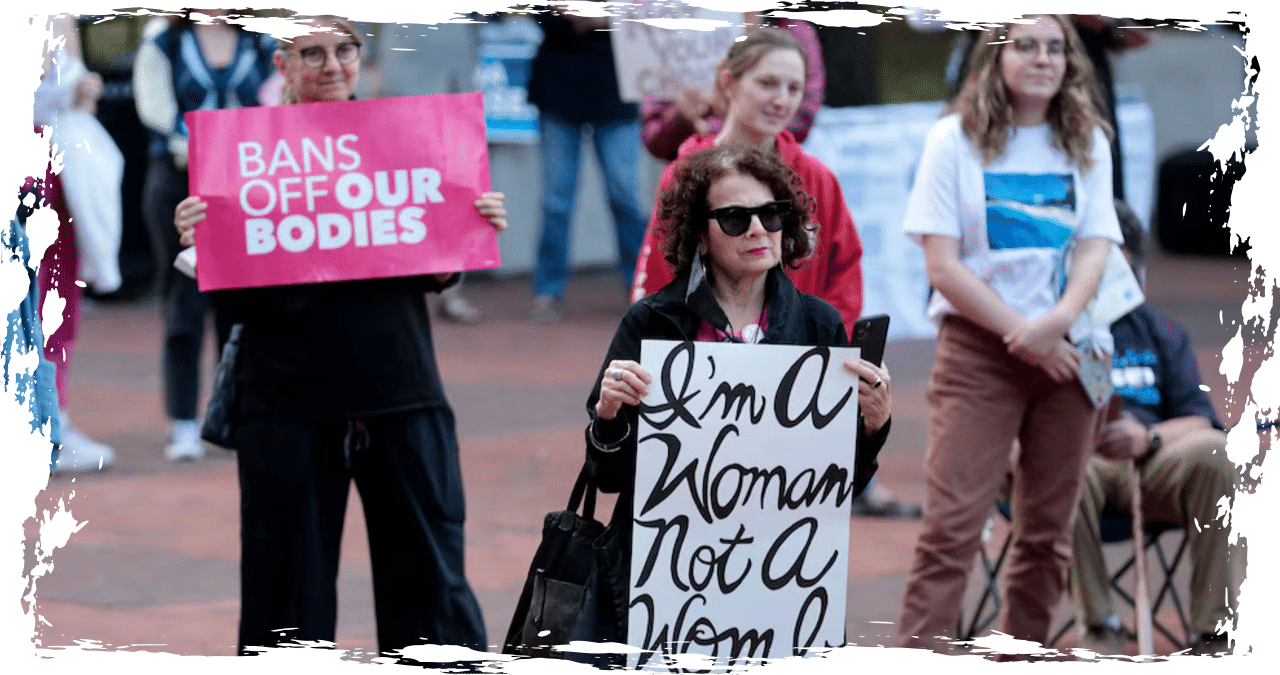Last year, Ohio voters made a constitutional amendment to protect abortion rights. Prior to this amendment, the state’s attorney general, an anti-abortion Republican, warned that at least 10 state laws that limited abortions would be upended as a result of this change.
Bethany Lewis, the executive director of the Preterm abortion clinic in Cleveland, highlights that despite efforts to remove legal barriers, access to abortions remains challenging. She notes that although laws have been modified, the process of obtaining an abortion is still not straightforward. Lewis explains that, in practice, little has changed despite legal amendments.
Currently, Ohio healthcare providers are still bound by the laws that restrict abortions, such as a mandatory waiting period of 24 hours and a ban on abortions after 20 weeks. These laws were unaffected by the constitutional amendment, which was passed with almost 57% of the vote. Advocates for abortion rights will need to invest significant time and resources to challenge these laws through the legal system.
Up to 13 states may have abortion-related ballot initiatives for voters to consider this year. However, the seven states that voted on such measures since the Supreme Court overturned federal abortion protections in the Dobbs v. Jackson Women’s Health Organization case two years ago, demonstrate that an election is merely the start of the discussion.
It may take several years to establish a definitive set of rules that determine the availability and accessibility of abortions across the United States. This is due to the varied constitutional amendments, laws, and regulations in each state that need to be reconciled with new legislation in both the legislative and judicial spheres. Even after a ballot measure has been passed, there may be residual older laws that require untangling. Failure to address these statutes could result in their appearance decades later, much like what happened with a law from 1864 in Arizona this year.
In June 2022, the Dobbs decision sparked a wave of debate on abortion rights across the United States. Michigan was among the first states to take action on the issue, with voters casting their ballots on a constitutional amendment to add abortion rights in November of that year. The amendment was approved with a 13 percentage point margin, signaling strong support for reproductive rights in the state. However, it took another 15 months before the first legal challenge was launched against Michigan’s existing abortion restrictions, which are known as “targeted regulation of abortion providers” or TRAP laws. Among these restrictions is a mandatory 24-hour waiting period, which adds an additional barrier for individuals seeking abortion care in the state.
Elisabeth Smith, the State Policy and Advocacy Director at the Center for Reproductive Rights, who filed the lawsuit, clarified that the delay was intentional. She stated that changing laws through the legislature is a more desirable approach than through litigation since the courts are only authorized to nullify a law and not create a new one.
According to Smith, it was crucial to let the legislative process take its course before resorting to legal action. Only if there were any remaining statutes that the legislature had not repealed, they would consider litigation.
Katie Daniel, the State Policy Director for Susan B. Anthony Pro-Life America, is among the abortion opponents who are expressing their disapproval of the lawsuit and the attempts to undo such policies. According to her, abortion rights advocates have employed “deceptive campaigns” that falsely claimed to want to reinstate the previous status quo, where abortion regulation was entrusted to the states, prior to the Dobbs decision.
Preterm and other abortion providers in Ohio have filed a lawsuit to undo the majority of the state’s abortion restrictions. This move comes after a ballot measure was passed four months earlier, and with Republicans controlling both the legislature and governor’s office, a legislative solution seems unlikely. Preterm’s Lewis expects the legal battle to be a lengthy one.
Dave Yost, who holds the position of Ohio attorney general, is among the defendants mentioned in the lawsuit. Yost filed a motion to dismiss the case, stating that the abortion providers, including various clinics and physician Catherine Romanos, did not have the necessary standing to file the suit.
According to him, Romanos did not provide any evidence of harm caused by the laws. He further added that as a licensed physician in Ohio, Dr. Romanos always abided by these laws, and therefore, these laws did not harm her in any way.
According to Jessie Hill, the attorney who is representing Romanos and three of the clinics in the case, the argument put forth is “just very wrong.” Hill explained that if Romanos is unable to challenge the constitutionality of the old laws because she is complying with them, then she would need to violate those laws and run the risk of felonies to honor the new amendment.
Hill expressed concern over the process of having someone arrested, brought to court, and then asked to defend themselves based on a new constitutional amendment. “We don’t want to have a system like that for obvious reasons,” she stated.
Missouri is set to vote on a ballot measure this year, which aims to enshrine protections for abortion in the state constitution. Since 2022, abortions have been banned in almost all cases in Missouri, and previous laws had already made obtaining an abortion difficult.
Missouri legislators have passed several regulations on abortion clinics over the past 30 years. These include a 72-hour waiting period, minimum dimensions for procedure rooms and hallways, and a requirement for abortion providers to have admitting privileges at nearby hospitals. These are just a few of the various regulations that have been implemented.
According to Emily Wales, the president and CEO of Planned Parenthood Great Plains, her organization had to make significant changes to their facility in Columbia, Missouri, in order to comply with the restrictive laws. These changes included widening doorways, adding more staff lockers, and even adjusting the distance between recovery chairs and door frames. The visible impact of these laws on the facility was undeniable.
In 2018, the organization had to cease providing abortion services at their Columbia location, despite recovery chairs being left in place for a final inspection that never occurred.
In 2021, Missouri’s ban on abortions was allowed following the Dobbs decision. Prior to this, the number of recorded abortions in the state had significantly decreased to only 150 from a high of 5,772 in 2011.
Wales suggested that, during that time, it would have been more beneficial for Missourians to depart from the state.
Missouri’s two Planned Parenthood affiliates have pledged to quickly restore abortion services in the state if voters approve the proposed ballot measure. However, despite the measure’s passage, the restrictive laws that have limited access to abortions in the state would remain in effect and are unlikely to be overturned by the Republican-controlled legislature and governor’s office. The laws could face legal challenges, but the process could be time-consuming.
According to Wales, the amendments would be unconstitutional based on their current language. However, he acknowledges that the process is still ongoing and subject to change.



